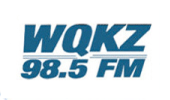Patoka Sportsman 10-3-20
Patoka Sportsman 10-3 & 10-4-20
Patoka Lake is hosting Autumn Getaway Weekends on October 9 -10 and 16-17 within the framework of the State’s guidance for event planning, including social distancing, mask requirements, hand-washing and sanitizing of program materials this year. Events include campsite decorating contest, pumpkin decorating and carving contests, tie dye t-shirt craft (please bring your own 100% cotton shirt), pet parade and costume contests, zombie hunt, pumpkins and carving tools for purchase, trick-or-treat, and educational programs. This year, however, because of COVID-19, if trick-or-treating occurs at park properties, it will be only for campers. All celebrations will incorporate safety guidelines developed in conjunction with the State’s COVID-19 Executive Orders and Back on Track Plan. Check the DNR calendar for great outdoor programs for everyone at calendar.dnr.IN.gov. Check for campsite or park-managed cabin availability at camp.IN.gov or call 866-622-6746 or find available state park inn rooms or inn-managed cabins at indianainns.com or 1-877-LODGES1.
State Park Deer management draw dates are November 16-17 for the early hunt and November 30-December 1, 2020 for the late hunt. Applicants must possess any valid license to take a deer in Indiana at the time of the application, not including apprentice licenses. Applicants must be Indiana residents (or possess a valid lifetime comprehensive hunting license to take deer in Indiana), be 18 years of age by the date of the first hunt, and must possess the proper licenses to hunt deer in order to apply. Once you have submitted your application online, you cannot change your information.
For successful applicants, deer harvested at a State Park Management Hunt are in addition to regular deer-season bag limits. You do not need to purchase additional licenses to harvest deer if participating in the management hunt. For questions regarding State Park Deer Management Hunts, please contact DNR's Division of State Parks at 317-232-4200.
Available state parks locally in 2020 include Brown County State Park, Harmonie State Park, Lincoln State Park, McCormick's Creek State Park and Spring Mill State Park.
Indiana Conservation Officers are offering safety tips to help keep Hoosier deer hunters safe.
The various deer hunting seasons run through Jan. 31, 2021. It is estimated that more than 300,000 people will participate in some form of deer hunting in Indiana during that span. Such a large number makes safety more even more important.
The most common injuries during deer seasons are accidents involving tree stands and elevated platforms. Follow the safety tips listed below when hunting from an elevated position:
Before the hunt:
- Read and understand the tree stand manufacturer’s instructions.
- Check tree stands and equipment for wear, fatigue, and cracks or loose nuts/bolts, paying particularly close attention to parts made of material other than metal.
- Practice at ground level.
- Learn how to properly wear your full-body safety harness.
During the hunt:
- Wear your full-body safety harness.
- Use a tree stand safety rope.
- Make certain to attach your harness to the tree before leaving the ground, and that it remains attached to the tree until you return to the ground.
- Maintain three points of contact during ascent and descent.
- Use boots with non-slip soles to avoid slipping.
- Use a haul line to raise and lower firearms, bows and other hunting gear.
- Make certain firearms are unloaded, action open and safety on before attaching the haul line.
Additional safety tips:
- Carry emergency equipment, such as a cell phone and flashlight.
- Make a plan before you hunt.
- Tell someone your plan, including where you will be hunting and when you plan to return.
- Stick to your plan.
- Identify game before pointing a firearm.
- Know your target and what is beyond it.
For more information, see hunting.IN.gov.
Youth free hunting days are November 28-29. Any resident age 17 or younger on the date of the hunt can take any legal game in season during these youth free hunting days. To participate, the youth must be accompanied by an adult who is at least 18 years of age. The youth hunter does not have to possess a hunting license but must comply with all other hunting regulations.
DNR would like to remind everyone to be aware of their surroundings. Hunters are not required to wear hunter orange until firearms season in November, and could be hard to spot. If you see a bowhunter, give them space to ensure that everyone has an opportunity to enjoy the outdoors. Consider wearing hunter orange when entering areas where hunters are present, especially when venturing off-trail. Please note that state parks only allow deer hunting on certain reserved draw dates. Other DNR properties, like state forests and fish & wildlife areas, allow hunting throughout the seasons.Questions about deer seasons and regulations can be directed to the Deer Hotline at [email protected] or call 812-334-3795, 8:30 a.m. to 4 p.m. ET, Monday through Friday.
Gov. Eric J. Holcomb recently joined members of the Clarksville Town Council and Redevelopment Commission to officially open the newly completed Discovery Trail. The 1.9-mile asphalt multi-use trail was built with help from a Next Level Trails grant.The new trail is built on a former railroad corridor, acquired from CSX by the town in 2018. The project extends through Clarksville, from Applegate Lane southwest to Silver Creek, where the trail merges with the Ohio River Greenway, creating uninterrupted trail connections to New Albany, Jeffersonville, and Louisville. As part of the project, a new trailhead and crossing signal were installed at Eastern Boulevard.
An Indiana DNR Division of Reclamation (DOR) project in southwest Indiana received the highest regional award the federal Office of Surface Mining Reclamation and Enforcement (OSMRE) issues annually.The award is for the Buttermilk Highwalls project in Pike County. The project addressed public safety and environmental concerns left by the Ayrshire #7400 mine that operated from 1953-1955 in what is now a section of Sugar Ridge Fish & Wildlife Area. The project included two highwalls and an acidic mine pit lake with poor water quality. Ranging between 15 and 38 feet high, with a combined length of 1,615 feet, the steep and unstable highwalls were a danger to Sugar Ridge FWA visitors.
Deer-vehicle accidents can be minimized by practicing good defensive driving skills.
Staying aware and keeping the following information in mind can help motorists reduce their chances of becoming another deer-vehicle collision statistic:
- Deer are most active at dawn and dusk.
- Deer often travel in groups. If you see one deer, another is likely nearby.
- Be especially careful in areas where you have seen deer before.
- Use high beams when there is no opposing traffic. Scan for deer’s illuminated eyes or dark silhouettes along the side of the road.
- If you see a deer, slow your speed drastically, even if it is far away.
- Exercise extreme caution along wooded edges, at hills, and during blind turns.
- Never swerve to avoid hitting a deer. Most serious crashes occur when drivers try to miss a deer, but hit something else.
Statistics about deer-vehicle collisions in Indiana are available in the 2019 Indiana Deer Report.
You can help the DNR track wildlife health over time and detect potential disease outbreaks through a new reporting system. Individuals are encouraged to report fish or wildlife displaying odd behavior or signs of disease. They are especially interested in incidents involving the death of five or more animals, recurring deaths of animals in the same location over a period of time, deer exhibiting signs that may indicate chronic wasting disease or epizootic hemorrhagic disease, or incidents involving threatened or endangered species.




